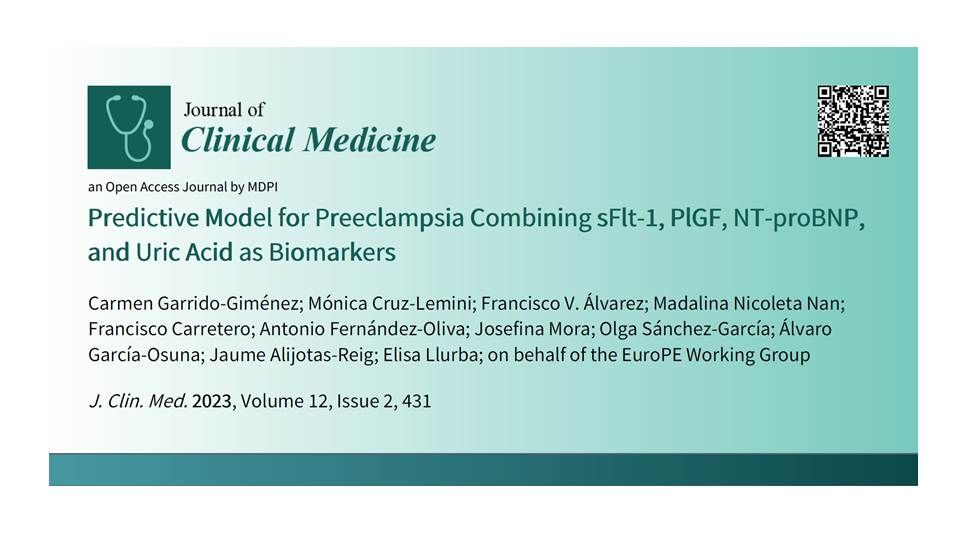- 1 de febrero de 2023
Artículo de interés. Predictive Model for Preeclampsia Combining sFlt-1, PlGF, NT-proBNP, and Uric Acid as Biomarkers

Nuevo artículo de interés para la RICORS-SAMID
Área de obstetrícia
Resumen
N-terminal pro-brain natriuretic peptide (NT-proBNP) and uric acid are elevated in pregnancies with preeclampsia (PE). Short-term prediction of PE using angiogenic factors has many false-positive results. Our objective was to validate a machine-learning model (MLM) to predict PE in patients with clinical suspicion, and evaluate if the model performed better than the sFlt-1/PlGF ratio alone. A multicentric cohort study of pregnancies with suspected PE between 24+0 and 36+6 weeks was used. The MLM included six predictors: gestational age, chronic hypertension, sFlt-1, PlGF, NT-proBNP, and uric acid. A total of 936 serum samples from 597 women were included. The PPV of the MLM for PE following 6 weeks was 83.1% (95% CI 78.5–88.2) compared to 72.8% (95% CI 67.4–78.4) for the sFlt-1/PlGF ratio. The specificity of the model was better; 94.9% vs. 91%, respectively. The AUC was significantly improved compared to the ratio alone [0.941 (95% CI 0.926–0.956) vs. 0.901 (95% CI 0.880–0.921), p < 0.05]. For prediction of preterm PE within 1 week, the AUC of the MLM was 0.954 (95% CI 0.937–0.968); significantly greater than the ratio alone [0.914 (95% CI 0.890–0.934), p < 0.01]. To conclude, an MLM combining the sFlt-1/PlGF ratio, NT-proBNP, and uric acid performs better to predict preterm PE compared to the sFlt-1/PlGF ratio alone, potentially increasing clinical precision.
PMID: 36675361
Para ver el artículo pulsar aquí.

